- Top
- Entertainment
- Shohei Ohtani's high school days
Shohei Ohtani's high school days
Shohei has been a unicorn since high school!
Shohei Ohtani(大谷翔平 in kanji) entered Hanamaki-Higashi High School in his hometown of Iwate in the spring of 2010. This was right after Yusei Kikuchi graduated. Shohei had participated in a national tournament in elementary school, and later in junior high school as well. In the middle of that national tournament in Osaka, Hanamaki-Higashi, where Kikuchi was playing, was in the midst of the National High School Baseball Championship Tournament. Shohei decided to go watch Hanamaki-Higashi practice on a day when he had some free time after losing the national tournament.
Shohei described his impression of the team, "When I saw them practice, I thought they were a good team. The atmosphere of the team as a whole was good, and they were practicing well. I also thought that the practices to develop their individual abilities as players were very good."
The baseball team members at Hanamaki-Higashi High School live in a dormitory, and Shohei entered the dormitory as soon as he entered high school. Shohei describes dormitory life as a good environment and a chance for him to change a lot. He says that the restrictions on his lifestyle and recreational activities taught him the importance of thinking about what is right and acting accordingly.
He said, "First of all, I think it was good that I had adults other than my parents teach me so many things in high school. Even if someone says the same thing to you, it has a different meaning if it is said to you by a different person than if it is said to you by your parents."
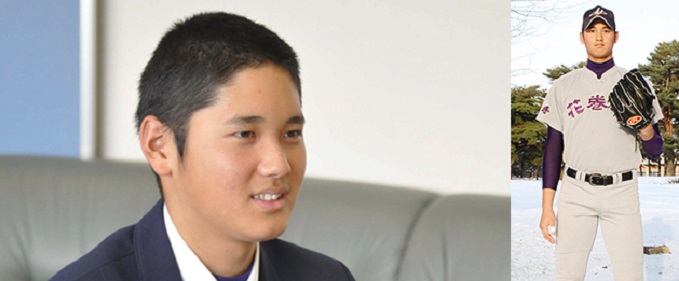
In addition, he said "I think the environment of the high school where I lived in the dormitory was also good. I started to think properly before taking action. Even so, I was scolded many times. Once, I was very angry because I overslept. I was taken out of practice for a few days and made to shovel snow. I was the one who had to practice the most on the team, but I created a situation where the head coach had no choice but to do so. I felt bad about that."
That coach was Hiroshi Sasaki. When Shohei entered high school, Sasaki prioritized his physical development and had him play in games as a fielder rather than a pitcher. However, Sasaki did not have high expectations for Shohei as a hitter. Since Shohei himself was highly conscious of being a pitcher, Sasaki and Shohei set high goals for him as a pitcher. That was to throw 100 MPH, which was faster than the fastest high school speed of 98 MPH at the time.
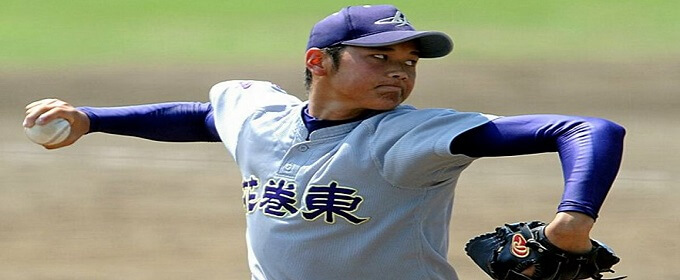
This was based on Sasaki's personal theory that "preconceptions make the possible impossible" or in other words, "the impossible becomes possible by abandoning preconceptions. Shohei, who is now an adult, spoke about these words he received in high school in 2021. He said "At the time, I thought that if I ever made it to the MLB, I would probably be a pitcher. But even that was a preconceived notion. I didn't know what I would be like or how far I could go. My batting improved more than I expected, and I think I had a lot of potential that I didn't even know existed."
Shohei's influence on the current Hanamaki-Higashi High School players goes beyond baseball. Sasaki said, "Shohei and Yusei Kikuchi were great not only as baseball players, but also in many other ways. Shohei and Yusei Kikuchi were great not only as baseball players but also in many other aspects. Thanks to them, it is easier for me to teach students today. For example, Shohei scored about 85 in all subjects in his studies. I could tell my students that Shohei not only played baseball but also studied, cleaned the dormitory, and did his homework. Looking back now, I think he did a great job coming to me, and I can only thank him for that."
Sasaki had Shohei play as a fielder until the summer of his first year in high school, and then Shohei started pitching in the fall of his first year and threw a 91 MPH pitch. In the first game of the National High School Baseball Championships in his second year of high school, Shohei threw a 93 MPH pitch, tying Masahiro Tanaka (former Yankee) for the fastest by a second-year high school student at the time. As a hitter, he also hit a home run off Shintaro Fujinami (MLB player) in the first game of the 2012 National High School Baseball Tournament in March, but lost the game.
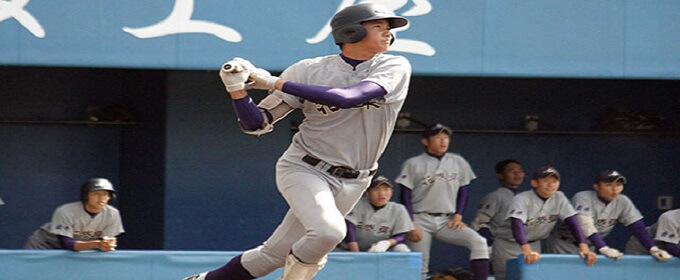
Shohei, however, suffered from a breakdown after the summer of his second year in high school. He damaged the epiphyseal line in his hip joint, which prevented him from pitching as he should have. However, "the injury was a good thing for Shohei," said Sasaki. He added, "In Iwate Prefecture, it snows in the winter and we can't practice on the field, so we had to practice running all the time. But Shohei couldn't run, so he ate and slept and gained about 20 kg over the winter. Shohei said that batting didn't hurt, so I had him practice hitting, and his batting improved. I think the reason Shohei was able to throw 100 MPH and the reason he developed a batting core was because of his injury."
In the summer of his final third year of high school after recovering from an injury, Shohei recorded a pitch speed of 100 MPH in a qualifying game for the National High School Baseball Championships. However, he lost in the final game despite striking out 15, and did not participate in his final high school national tournament. In September, he was selected to represent Japan at the AAA World Baseball Championships. In that game, he pitched seven innings, allowing two runs and striking out 12, with a fastball speed of 96 MPH, but was the losing pitcher.
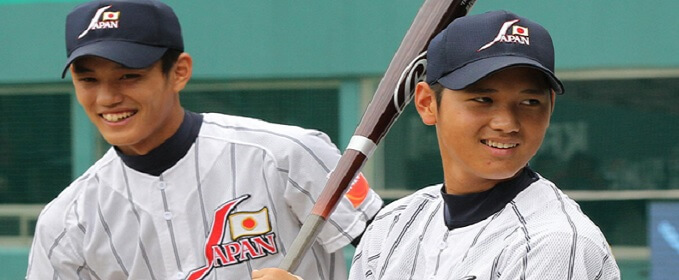
Shohei has attracted attention not only from NPB but also from MLB teams (LAD, TEX, and BOS), and on October 21, he announced his challenge to MLB. At the press conference, he said, "I have a stronger yearning for the MLB than for the NPB. I am prepared to start in the minor leagues, but I want to challenge the major leagues."
However, at the NPB draft meeting held on October 25, the Hokkaido Nippon-Ham Fighters selected Otani in the first round alone and acquired the right to negotiate. At a press conference after the pick, Shohei said, "I appreciate the recognition, but I still want to play in the U.S.," and did not meet with the team when they paid him a visit. However, Shohei later met with the team on their second visit, and he and his parents held discussions with the team on four occasions.
During the discussion, a 30-page document titled "A Guide to the Dream: A Study of Overseas Entry at a Young Age in Japanese Sports" was presented. The main point of the document was that Korean baseball players who tried MLB immediately after high school graduation have not been successful in MLB. The material also explained the harsh minor league baseball situation, and the fact that players who have developed their skills in their home country's professional leagues have a higher chance of playing in the MLB.
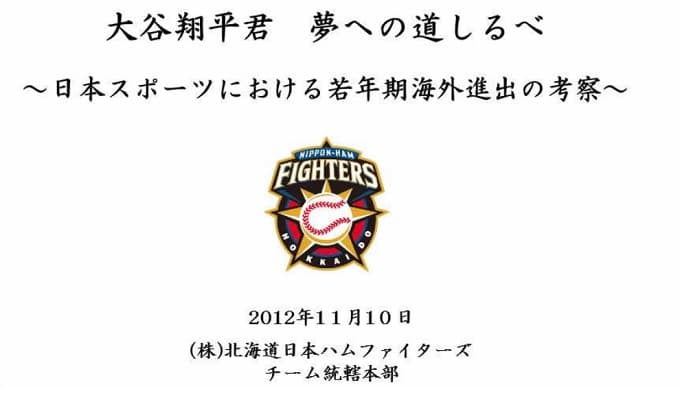
Furthermore, at this time, a plan to develop a "two-way player" pitcher and hitter was also presented. In fact, Shohei himself had not decided before submitting his application whether he would concentrate on fielding or pitching. In fact, there were many meetings within Nippon Ham Fighters, but it was decided that Shohei could not focus on either pitching or hitting. Therefore, it was decided to offer Shohei a two-way player plan. Shohei had already been in negotiations with several major league teams, but at first he was surprised, saying that he had no such idea.
In December 2012, Shohei announced that he would join Nippon Ham Fighters and take on the challenge of pitching and hitting. At a press conference, he said, "I gradually changed my mind that I should go to the U.S. from the beginning in order to play in the U.S. for a long time. I had not thought about two-way player myself, but when Manager Kuriyama said to me, 'I want you to walk down a path that no one has walked before,' that was the deciding factor in my decision." Shohei will wear the number 11, which Yu Darvish had worn until the previous year.
sources
- https://www.baseballchannel.jp/mlb/65879/2/
- https://www.nikkansports.com/baseball/professional/draft/2012/news/p-bb-tp0-20121111-1045244.html
- https://frenchkiss-emuzu2.ssl-lolipop.jp/03/zip/121213-nihonham-ohtani.pdf
- https://web.archive.org/web/20121213144544/https://www.fighters.co.jp/news/detail/3251.html
- https://wpb.shueisha.co.jp/news/sports/2023/08/04/120240/
- https://number.bunshun.jp/articles/-/849332?page=2
- https://number.bunshun.jp/articles/-/840121?page=2
- Shohei Ohtani's early life
- Shohei Ohtani's high school days
- Shohei Ohtani's NPB career
- Yoshinobu Yamamoto's early life
- Shota Imanaga's early life
- Seiya Suzuki's early life
- Kodai Senga's early life
- Yuki Matsui's early life
- Shintaro Fujinami's early life
- Roki Sasaki's early life
- Tomoyuki Sugano's early life
- Shinnosuke Ogasawara's early life